
Past Lives gives snapshots of its protagonists in three different decades within a two-hour time frame. It begins when its star-crossed would-be lovers are just 12 years old; jumps ahead 12 years to their 24-year-old iterations when they share a screen but are thousands of miles apart; then jumps ahead by another 12 years, when everything about the protagonists’ relationship is condensed into a few days as they share the same physical space, New York City. The time in which the characters are in the same place is relatively short, yet its intensity belies how much they have also occupied one another’s mental space, albeit in perhaps different ways. It is from this collision that the story unspools into one of many possible threads.
The tension, expectation, imagination, longing, wonder, and comfort of decades of picturing an alternate reality couched in familiarity and recognition are boiled down and distilled in the space of the few days that Hae Sung is in New York, in the flesh, reckoning fantasy with reality. This section of the film is saturated with the bittersweet sense of loss for something that never was but always could have been. Nora’s emotional breakdown in the film’s closing moments is a release of the accumulation of disappointment and disillusionment—the whiplash of being pulled back and forth between possible lives. Wrapped up in the complex dynamics of her relationships with these two very different men and the very different lives they represent are delicate questions of identity. The film’s key theme is thus twofold: love and identity, both delicately bound up with—and bound with one another by—chance.
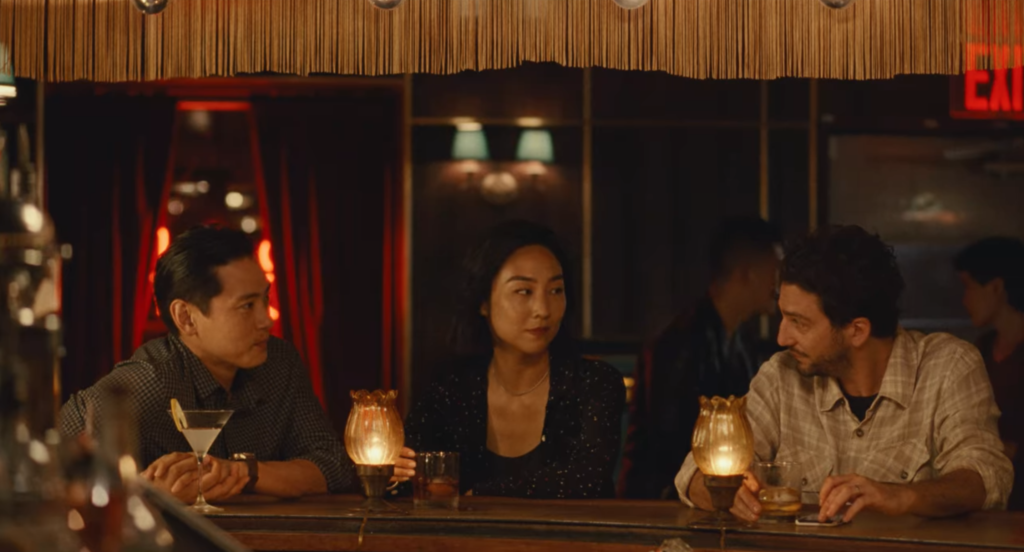
Nora is the film’s key storyteller. But Nora is not her original name—she was born in Korea and spent her first dozen years growing up amongst the hustle and concrete of Seoul. When she is 12, her family uproots for a new life in Canada, and Nora re-christens herself with an Anglicized name to facilitate her transition. Her last name, Moon, remains unchanged, and it is an appropriate one for the life she comes to have and her star-crossed fate. Fate is a concept Nora herself dismisses, but Past Lives nevertheless alludes to Buddhism at various points, including in its title. The film orbits around Nora, as do the only other characters who feature meaningfully, Hae Sung and Arthur. Hae Sung is her childhood sweetheart from Seoul, a boy she passes afternoons crying in front of who becomes a representation not only of her childhood but also the life she would have (may have) lived had her family not left Korea. Arthur is the man she ends up with. Both men are equally good. Both men appear equally eager to love Nora.
As the film illustrates, life mutates and adapts as it must, and love can grow in many places. By Arthur’s own description, the stages of his and Nora’s relationship seem to have evolved largely by chance. Nora’s ambitions bring her to New York, a city synonymous with the American Dream and which is framed as a kind of endpoint for her as an artist. She and Arthur meet at a writer’s retreat; cohabit because, hey, New York is expensive; and marry because Nora needs a Green Card to be able to stay in the States. Nora points out that while this is all true, Arthur’s version of their love story omits the love part. Whether the more circumstantial elements of their relationship are an indication of its fragility and happenstance is irrelevant. These things happened, and while they unfolded, Nora and Arthur began to love each other and continue to do so up to the present.
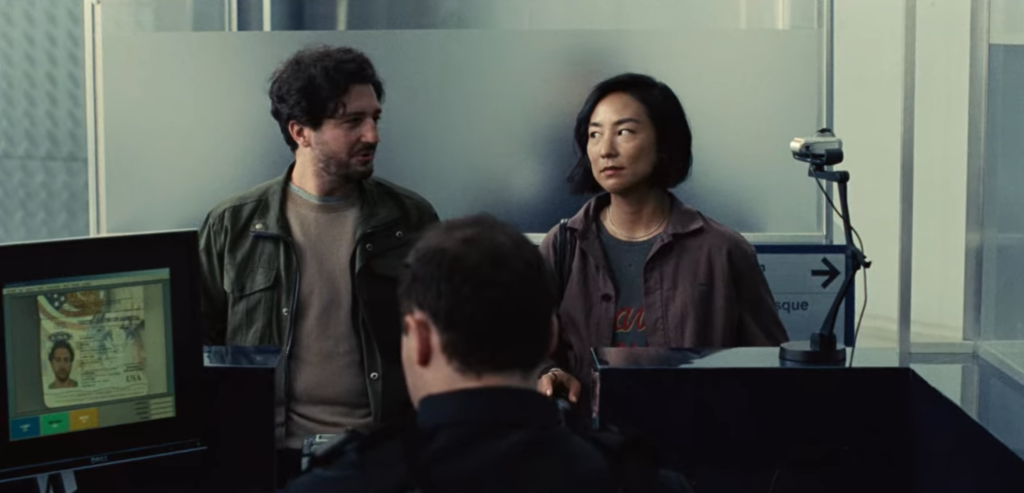
There is a hardness, a pragmatism to Nora that is perhaps the result of her uprooting as well as her ambition. When Arthur bewails the lack of romanticism in their story as a couple and if he is enough for the grand vision propelling Nora’s “family’s immigrant dream,” Nora’s response is simple, concise, almost laconic: “This is where I ended up. This is where I’m supposed to be.” She and Arthur married early for bureaucratic reasons. Her expediency in this regard is consistent with the young girl in Seoul who asserted that she was leaving Korea to pursue her literary ambitions, and her realism contrasts with the dreamier, more earnest and idealistic Hae Sung, who has likely wiled away the decades with a particular vision of Nora tucked safely in his imagination.
Nora’s internal conflict pulls her from one side back to Hae Sung, into a past life that is impossible to reclaim, and on the other side forward to Arthur, into a future life that is unfolding in countless ways that she cannot anticipate. The forward momentum of this life is driven by external forces like immigration law and professional opportunities—Nora’s reality is conditioned by forces she does not control. The life she imagines with Hae Sung, where her identity is not split in two, appears comforting with its well-defined, culturally clear-cut borders.
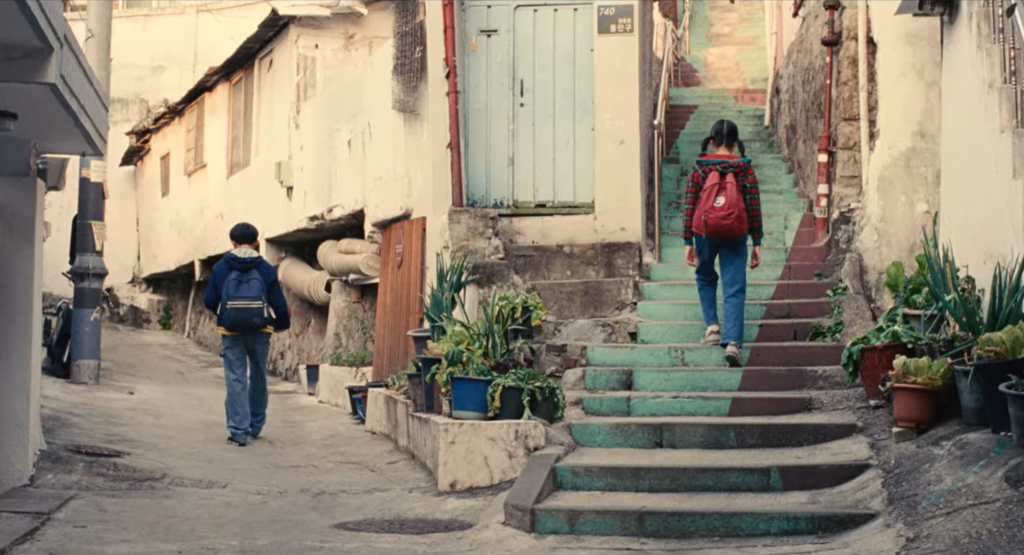
Nora fixates on Hae Sung’s “Koreanness,” the ways in which he is distinctively separate from her as a result of growing up in a different place with a different language, academic system, work culture, and so on. His style is Korean, his looks Korean, his views Korean—even his masculinity is coded as Korean. Culture imbues every aspect of his personhood. In one way this attracts Nora; in another way it alienates her. She is at once a part of that culture as a one-time participant in it but also separate from it, with physical and mental distance giving her the perspective necessary to recognize it as a construct, something that shapes the individual from the outside until it becomes so inseparable from their identity that even their thoughts and the way they move are molded by it.
In one of the first scenes of the film, the young Nora (at this point still known as Na Young) and her sister, still in Korea, announce to their parents that they will now be known as Michelle and Mary. New names, new lives. This exchange is entirely natural within the context, but it is also profoundly reflective of the identity construction process. The young Nora/Na Young has the relatively unusual opportunity to play a part in the remaking of her identity.
Most of us are not participants in one of the most very basic components of who we are—our names. These are chosen on our behalf, with the reasoning behind those choices being entirely dependent on the subjective desires, opinions, and backgrounds of the person/people choosing. Names are fundamental means of passing identity on, of intergenerational transmission of symbols, values, language. One might be named for another person in honor of them or the hope that the baby will grow up to be like their namesake.
Hae Sung’s total immersion in Korean culture (from Nora’s perspective) therefore also presents a limitation. Culture places restrictions on the way we feel we can behave, the choices we feel are available to us, the people we can be. It is something that is passed down, imposed. Nora’s family leaves Korea to escape being circumscribed by culture (as Na Young/Nora announces to her classmates, she is leaving Korea “because Koreans don’t win the Nobel Prize in Literature”).
Cultures also unite and separate us through customs and languages, creating a sense of belonging or exclusion. After Arthur reveals that Nora speaks Korean when she sleeps, lamenting that Nora dreams in a language inaccessible to him, Nora responds that she is probably “just saying gibberish.”
The ways in which we experience being a particular thing are necessarily individual and incommunicable.
Whether Nora is actually saying anything meaningful in her sleep does not matter; what is important is that there will always be parts of Nora that Arthur cannot know (and vice versa, and omni versa), regardless of language or any other factors. Our identities, with their infinite facets and constant changeability, are unique to each of us. We can stick labels on ourselves and each other, but the ways in which we experience being a particular thing—such as a nationality—are necessarily individual and incommunicable. Some experiences may be shared, but others will always be personal, and even shared experiences might be lived in wildly different ways.
The effects of this can be isolating. The language Nora uses when she sleep-talks—be it English, Korean, or some hybrid language of her own—makes no difference. What she knows only she can truly understand anyway. What’s more, Nora is a hybrid, caught in the still-more-isolating limbo of a double-barreled identity. The passing snippets mentioning her work as a writer all relate to questions of identity, to ideas of passages, crossings, journeys, and sacrifices. In one scene of an audition for a play Nora has written, the actor reads a monologue about the cost of coming to a performance, comparing the price her listener has paid for the ticket, transport, and time with the sacrifice the speaker has made in crossing an ocean to be in the same place: “Some crossings cost more than others. Some crossings you pay for with your whole life.”
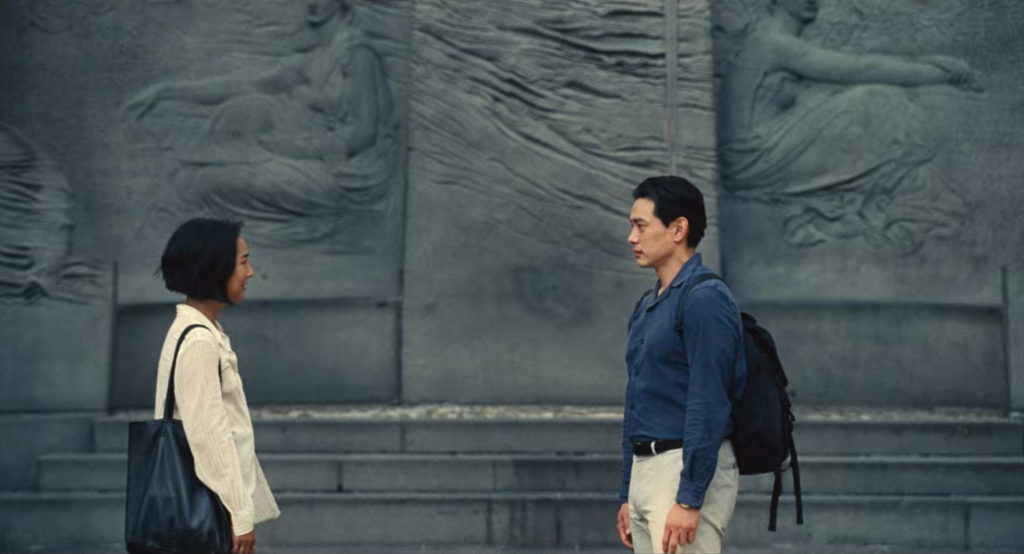
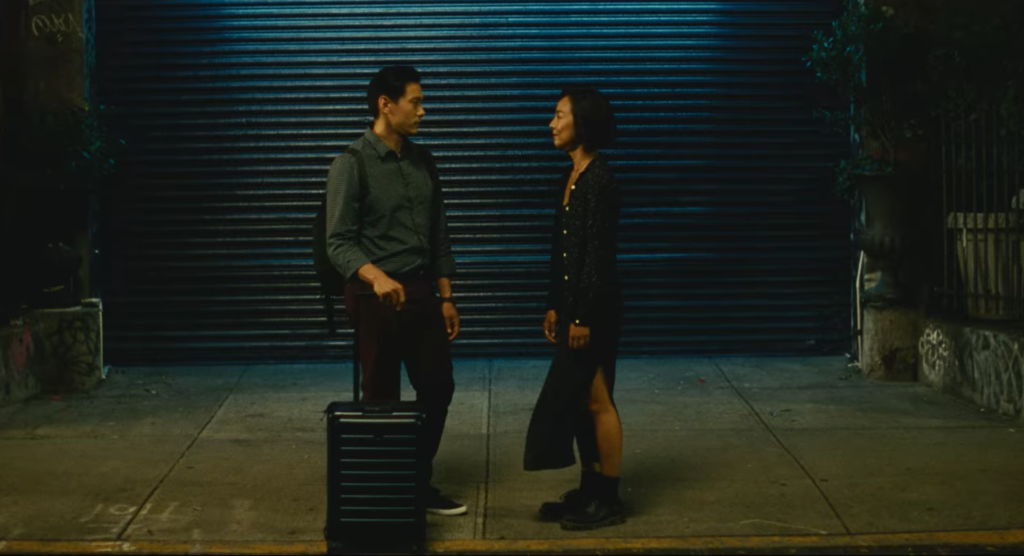
As a writer, Nora’s themes of journeys, loss, and identity are her attempt to convey what is otherwise impossible to articulate—her own experience. The film uses visual language to underscore this separation through its fixation on the characters’ positioning and the space separating them from one another. They linger in these moments, and the spaces seem to widen into gulfs. These tableaux capture them as they work, in isolation, through their emotions, emphasizing the singularity of experience.
Nora’s own journey has cost her a life with Hae Sung, and this trauma remains planted in her subconscious, to be worked through over and over through her writing. At the same time, she questions what that life really means, what Hae Sung’s link to a certain part of her identity is now after so much time has passed, her culture and language have changed, and so much of life has been lived. Nora’s sense of loss is as much for her relationship with Hae Sung as all he represents as a surrogate for Korea and Korean identity. He holds the “little girl” Nora “left behind,” a self that existed once but is now irretrievable.

As children Nora/Na Young and Hae Sung dart around the statues of a park. They each perch in the gaps of two heads gazing at one another, molded from the same stone and shaped in the image of one another, but with distinct differences. This is Il-Ho Lee’s New Gaze at Being, a surrealist 1994 sculpture. The statues’ features are asymmetrical, and there are gaps in the stone filled in instead by the landscape, just as Nora’s/Na Young’s and Hae Sung’s views of one another and themselves will be by time and distance and life. But the statues’ gaze is solid, reciprocal, connected by a single block of stone. Their sight of one another remains unbroken.
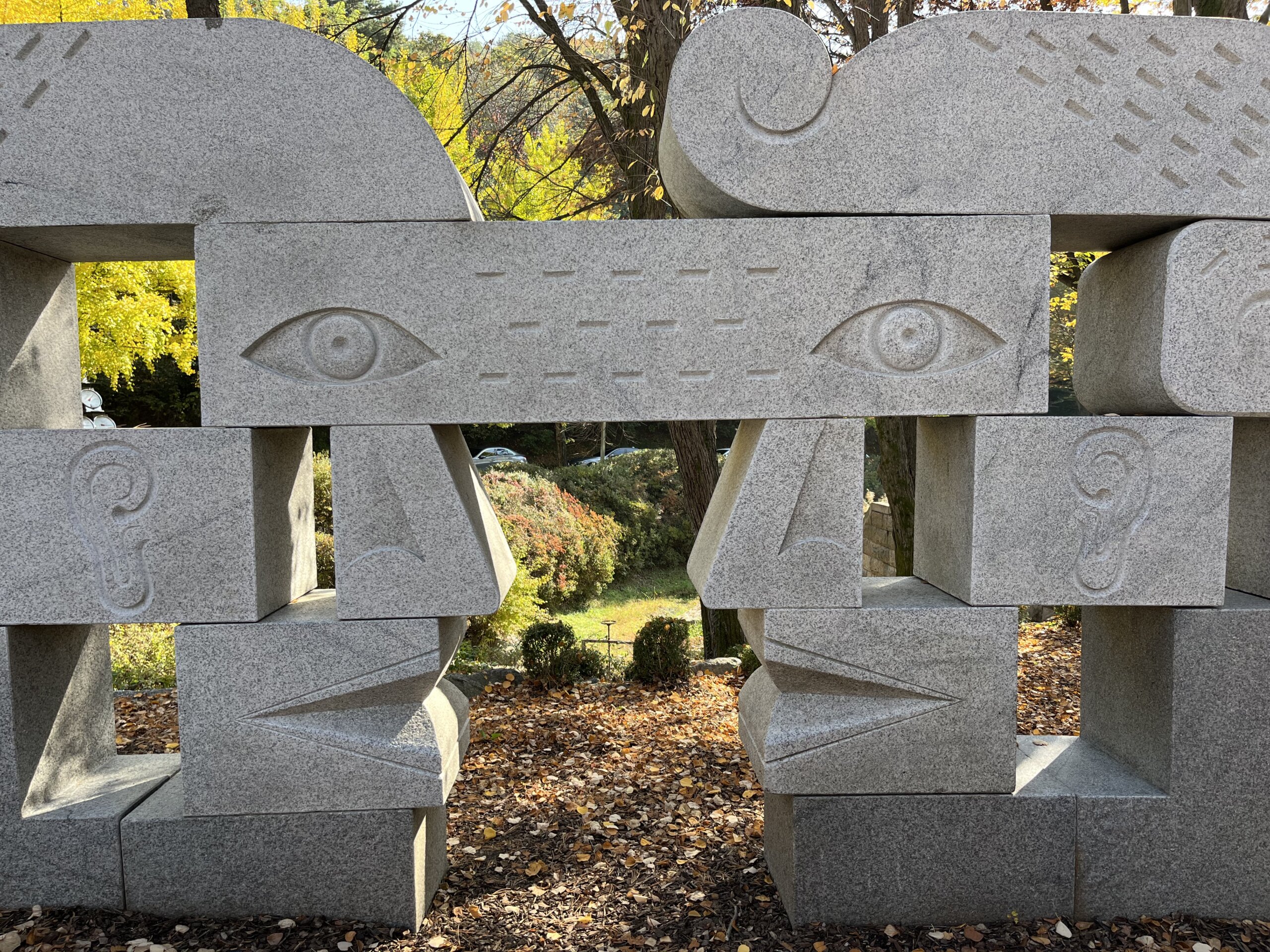
Copyright © 2022 My Sunset by Bogdan Bendziukov.






